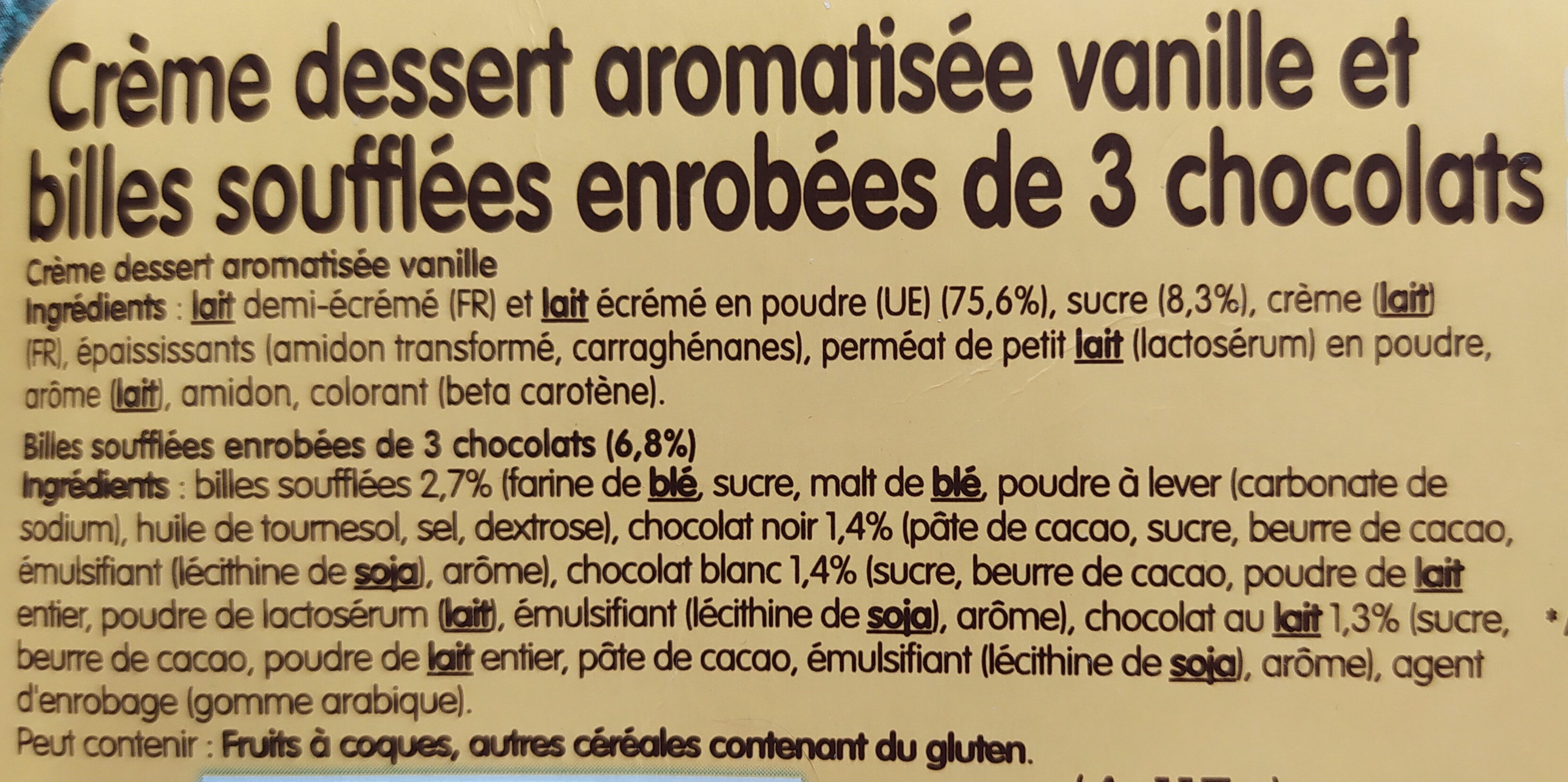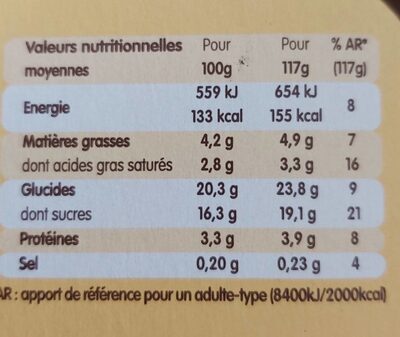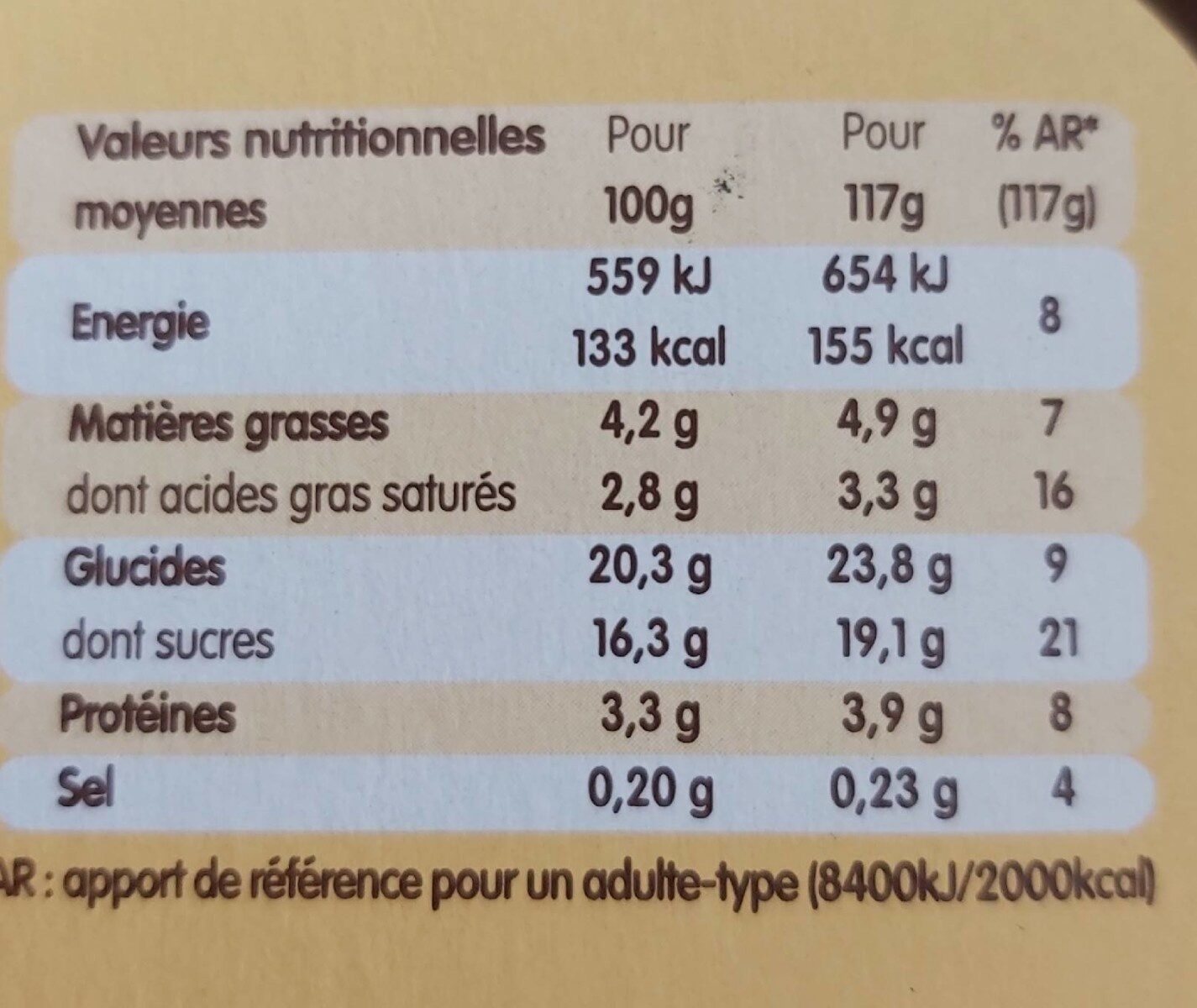Danette pop saveur vanille 117 g x 4 - Danone - 0.468 kg
This product page is not complete. You can help to complete it by editing it and adding more data from the photos we have, or by taking more photos using the app for Android or iPhone/iPad. Thank you!
×
Some of the data for this product has been provided directly by the manufacturer DANONE FRANCE.
Barcode: 3033491012006 (EAN / EAN-13)
Common name: Crème dessert aromatisée saveur vanille et billes soufflées enrobées de3 chocolats
Quantity: 0.468 kg
Packaging: Plastic, Pot, Fresh, fr:Etui en carton, fr:Pot en plastique
Brands: Danone, Danette, Danette grains de malice
Categories: Dairies, Desserts, Dairy desserts, Creamy puddings, Refrigerated creamy puddings, Vanilla creamy puddings, fr:Desserts lactés à la vanille
Labels, certifications, awards:
Green Dot, Triman

Traceability code: FR 14.370.001 CE - Molay-Littry (Calvados, France)
Link to the product page on the official site of the producer: http://www.pro.danone.fr/produits/danett...
Stores: Leclerc, Auchan, Magasins U, Delhaize, carrefour.fr
Matching with your preferences
Other information
Conservation conditions: A conserver entre +1°C et + 6°C maximum
Customer service: D.P.F.F., CS 50149 92565 Rueil-Malmaison Cedex
Report a problem
Data sources
The manufacturer DANONE FRANCE uses CodeOnline Food to automatically transmit data and photos for its products.
Manufacturers can use the Open Food Facts free plaform for producers to access and complete this data, and to obtain reports, analysis and product improvements opportunities (e.g. better Nutri-Score).
Product added on by openfoodfacts-contributors
Last edit of product page on by org-danone-france.
Product page also edited by beniben, countrybot, date-limite-app, driveoff, ecoscore-impact-estimator, inf, kiliweb, magasins-u, packbot, quechoisir, quentinbrd, roboto-app, sasa, sebleouf, segundo, teolemon, yuka.R2I0c0tJa291dndyaFBBVHhFN1gyODVSbDhHWlVIM3RCYnNRSWc9PQ, yuka.WFpnOU5ydzd2ZGdXdE1ZZnBUak53STFONDVxQ1pWKzZjY2NTSVE9PQ, yuka.XOBNPY-QO_wCNcb0_qIU7CLlS9vLAPxcQ1opog, yuka.YVpwYkNJQUV2Y015d2NBRDVoWHpvdlZ4M2J1clhXMmxOdHRKSVE9PQ, yuka.sY2b0xO6T85zoF3NwEKvlklOCsDw-w_PGwbQg2HS69fQIaPLWY4swtT5K6g.













